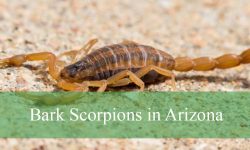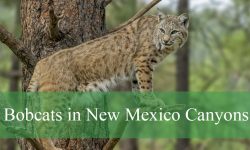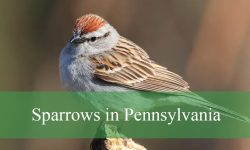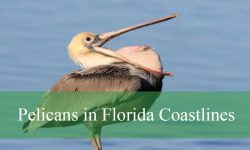Nevada’s striking mix of deserts, wetlands, and mountain forests provides a rich environment for raptors. Hawks in Nevada are commonly spotted across these varied landscapes, from wide-open basins to wooded river corridors. With sharp eyesight and powerful flight, these birds dominate the skies and are among the most thrilling wildlife to observe.
Many species of hawks in Nevada can be seen throughout the seasons—some are permanent residents, while others appear only during migration or winter. Red-tailed Hawks are especially widespread, while birds like the Rough-legged Hawk or Swainson’s Hawk appear at specific times of the year. Each hawk species has its own habitat preference, flight style, and hunting behavior, making identification an engaging challenge.
This article introduces 12 species of hawks in Nevada, featuring detailed descriptions, visual traits, and where to spot them. From high desert plateaus to lush riparian areas, these raptors are never too far from view if you know what to look for.
Common Hawks Found in Nevada
Red-tailed Hawk (Buteo jamaicensis)
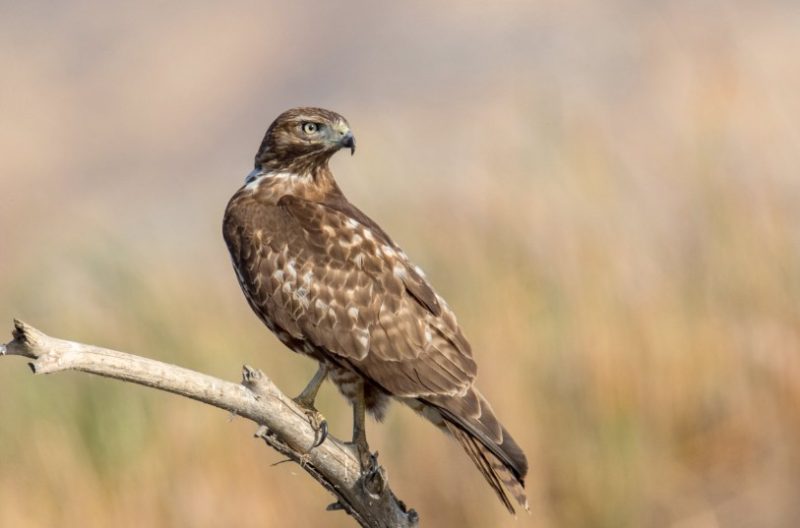
The Red-tailed Hawk is one of the most commonly seen hawks in Nevada, instantly recognizable by its broad wings, robust body, and characteristic reddish-brown tail. Adults typically display a pale underside with a dark belly band and a rich rufous tail, while juveniles have a more mottled appearance and lack the signature tail coloration. Their wingspan ranges from 43 to 57 inches, and they weigh between 2 to 4 pounds, with females being noticeably larger than males. This species is incredibly adaptable and can be found in a variety of environments.
In Nevada, Red-tailed Hawks inhabit open country, deserts, grasslands, woodlands, and even urban settings. They are particularly visible perched along highways, on utility poles, and in wide-open areas where they have a clear view of their prey. Their diet primarily consists of small mammals such as rodents and rabbits, but they may also hunt reptiles and birds. They are powerful hunters, often seen soaring in wide circles high above fields or perched silently while scanning for movement below.
Their behavior is generally solitary or as a mating pair, and they often return to the same nesting territory year after year. Their nests are built high in trees or on cliff ledges using sticks, and they prefer elevated locations that offer a broad view of the surroundings. Red-tailed Hawks are known for their piercing, raspy scream, which is frequently used in film and television to represent any bird of prey.
Throughout Nevada, these hawks are permanent residents and breed across the state. They are particularly prevalent in the Carson Valley, Red Rock Canyon, and along the edges of the Sierra Nevada range. Their adaptability makes them one of the most successful raptors in North America, and their presence is a reliable sight for birdwatchers and nature enthusiasts throughout the year.
Cooper’s Hawk (Accipiter cooperii)
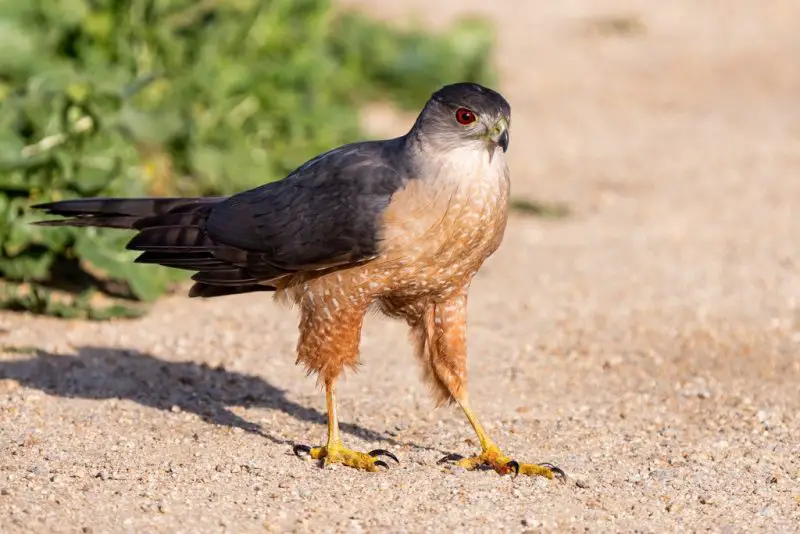
The Cooper’s Hawk is a sleek, medium-sized bird of prey known for its rounded wings and long tail, which aids in agile flight through dense woodlands. Adults display a steely blue-gray back, reddish barring on the chest, and a black-capped head with intense red eyes. Juveniles are brown above with streaky, buff-colored underparts and yellow eyes. Their wingspan ranges from 24 to 35 inches, and they typically weigh between 1 to 1.5 pounds.
These hawks are swift and agile flyers, often seen weaving through trees in pursuit of birds, which make up the bulk of their diet. They may also take small mammals and are known for their surprise attacks, bursting out of cover to snatch prey in mid-air. Cooper’s Hawks are quite stealthy, and their hunting tactics are well-suited to forested environments.
In Nevada, Cooper’s Hawks are widespread in wooded areas, riparian corridors, and even suburban neighborhoods where they are drawn to backyard bird feeders—often more for the birds than the seeds. They are especially active in areas with dense vegetation where small birds are plentiful. Their nests are built in large trees using twigs and leaves, usually well-hidden and placed high off the ground.
These hawks are year-round residents in Nevada and can be seen throughout the state, including urban areas like Reno and Las Vegas as well as more natural settings like the Spring Mountains and Red Rock Canyon. They are more often heard than seen, especially during the breeding season when their call—a series of sharp “cak-cak-cak” notes—is used to defend territory and attract mates.
Sharp-shinned Hawk (Accipiter striatus)
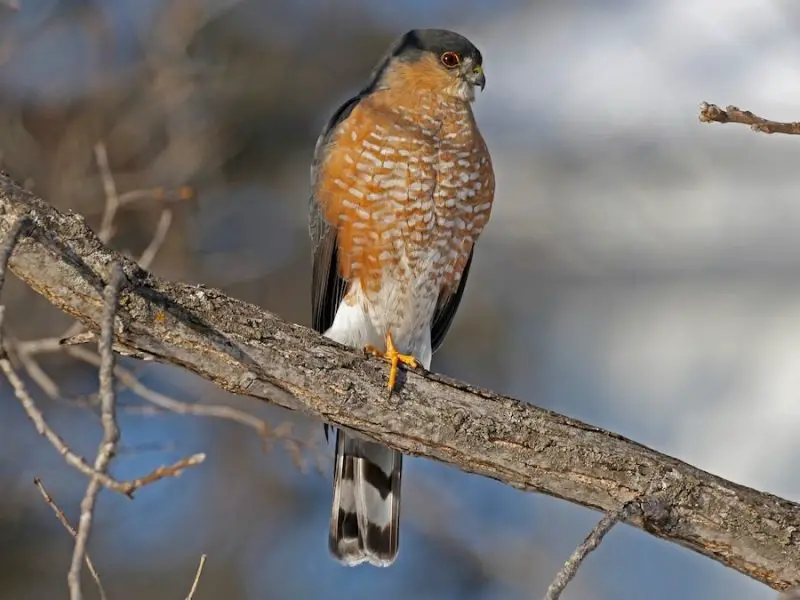
The Sharp-shinned Hawk is the smallest accipiter in North America, making it both quick and highly maneuverable in flight. It has a slim body, short rounded wings, and a long, narrow tail with a squared-off tip. Adults have slate-gray upperparts and finely barred reddish underparts, while juveniles are brown above with streaky, buff-colored bellies. These hawks typically measure between 9 to 13 inches in length, with a wingspan of 17 to 22 inches.
Known for their surprise attacks and rapid flight, Sharp-shinned Hawks are bird specialists. They prefer ambushing small songbirds from hidden perches, launching with speed and precision. Their small size allows them to zip through dense forests and thickets with ease. Despite their stealth, they are often detected by the panic they cause among flocks of birds at feeders.
Sharp-shinned Hawks are forest dwellers and prefer coniferous or mixed woodlands. In Nevada, they are most commonly seen during migration or winter months, though some may stay year-round in cooler montane forests. They are more elusive than other hawks and tend to avoid open areas, instead sticking close to thick cover where they can hunt effectively.
Their nests are well-camouflaged in dense trees and built of sticks lined with softer materials like bark. These hawks are particularly common during spring and fall migration in areas such as the Carson Valley and the Spring Mountains, where they can be spotted darting through the treetops or streaking low across fields in pursuit of prey.
American Goshawk (Accipiter atricapillus)

The American Goshawk is the largest of the North American accipiters and is a powerful, forest-dwelling raptor. Adults are striking with a steel-blue to slate-gray back, pale gray underparts with fine barring, a bold white stripe over each eye, and bright red eyes. Juveniles are brown above with heavily streaked underparts and yellow eyes. They have a wingspan of about 40 to 46 inches and can weigh between 1.5 to 3 pounds.
American Goshawks are fierce hunters and are known for their boldness, often defending their nests aggressively against intruders, including humans. They hunt a variety of prey including birds, mammals, and occasionally reptiles. Their broad wings and long tail enable them to maneuver through dense forests with remarkable agility.
This species prefers mature, dense forests, especially coniferous woodlands, and is most commonly found at higher elevations. In Nevada, Goshawks are typically found in the Sierra Nevada and other mountainous areas with suitable forest cover. They are generally reclusive and are more often heard than seen, especially during the nesting season when their loud “kak-kak-kak” calls ring through the woods.
Though not as commonly observed as other hawks, the American Goshawk is a resident in some parts of Nevada year-round, particularly in undisturbed wilderness areas. Their presence is considered an indicator of healthy, old-growth forests, and they are often a highlight for experienced birders who venture into remote mountain habitats.
Red-shouldered Hawk (Buteo lineatus)

The Red-shouldered Hawk is a medium-sized raptor known for its striking plumage and piercing calls. Adults feature a rich rufous chest, bold black-and-white barring on the wings and tail, and a dark back. The “red shoulders” refer to the rusty-colored patches visible on the upper wings when perched or flying. Juveniles are more muted, with brown streaks across the chest and less defined wing markings. These hawks have a wingspan of about 37 to 43 inches and typically weigh between 1.1 to 1.9 pounds.
This species is often heard before it is seen, emitting a loud, whistled “kee-aah” that echoes through wooded environments. Red-shouldered Hawks are known for their strong site fidelity, frequently returning to the same nesting area each year. Their nests are bulky constructions made of sticks, usually situated in the forks of tall trees near water. They are extremely territorial during breeding season and may aggressively defend their nest.
Red-shouldered Hawks primarily hunt small mammals, amphibians, and reptiles, often patrolling the edges of forests or soaring above water sources. They have a preference for wooded riparian zones, where dense tree cover and access to streams and ponds provide ideal hunting and nesting conditions. Their hunting technique includes low glides through the canopy and sudden pounces on unsuspecting prey.
In Nevada, they are more common in the southern and western parts of the state, particularly near riparian woodlands, such as those found along the Colorado River or in moist canyons near Red Rock Canyon and the Spring Mountains. Although less abundant than some other hawk species in the region, they are locally common where their specific habitat requirements are met.
Broad-winged Hawk (Buteo platypterus)

The Broad-winged Hawk is a smaller buteo species, notable for its compact shape, short tail, and broad wings that give it a stockier appearance during flight. Adults are dark brown above with white underparts barred with cinnamon, and they feature a conspicuous black-and-white banded tail. Their wingspan ranges from 29 to 39 inches, and they weigh roughly 0.9 to 1.3 pounds, making them among the smaller hawks in North America.
This hawk is best known for its incredible long-distance migrations, which occur in massive flocks called “kettles.” During migration, they may travel thousands of miles from breeding areas in North America to wintering grounds in Central and South America. While soaring, they display a distinctive silhouette with a pale underwing bordered in dark edges and a broad, rounded tail.
Broad-winged Hawks inhabit deciduous or mixed forests, particularly those near water. They prefer quiet, mature woodlands for nesting and are secretive during the breeding season, often going unnoticed despite their widespread presence in eastern forests. Their diet includes amphibians, insects, small mammals, and birds, typically captured from low perches in dense woods.
In Nevada, the Broad-winged Hawk is considered rare and is more likely to be seen during migration than as a breeding resident. Observations tend to come from the eastern part of the state or high mountain passes during spring and fall. Birdwatchers in Nevada may be fortunate to spot one during peak migration season when these hawks pass through the area in large groups.
Swainson’s Hawk (Buteo swainsoni)

Swainson’s Hawk is a long-winged raptor known for its graceful flight and vast migratory journeys. Adults are typically pale below with a dark bib across the chest and long, pointed wings that taper in flight. The back and upper wings are brown, and the tail is usually gray with narrow bands. Juveniles tend to have more streaking on the belly and lack the distinct bib. They have a wingspan of about 46 to 54 inches and weigh around 1.5 to 3 pounds.
This hawk is a long-distance migrant, traveling as far as Argentina during the winter. It undertakes one of the longest migrations of any raptor in the Western Hemisphere. In Nevada, Swainson’s Hawks are summer visitors and breeders, arriving in late spring to raise their young and departing by early fall. During migration, they often travel in kettles with other raptors and vultures, especially in open landscapes.
Swainson’s Hawks prefer open habitats such as grasslands, agricultural fields, shrublands, and prairies. They feed on insects like grasshoppers and dragonflies during the breeding season and switch to small mammals, birds, and reptiles when necessary. Unlike many hawks, they will frequently hunt from the ground or by hovering low above the terrain.
In Nevada, they are commonly found in the northern and central parts of the state during the summer months, especially in places like the Carson Valley and high-desert plains. Their preference for open country makes them a familiar sight in ranching and farming areas, where they often nest in lone trees or utility poles surrounded by expansive fields.
Northern Harrier (Circus hudsonius)
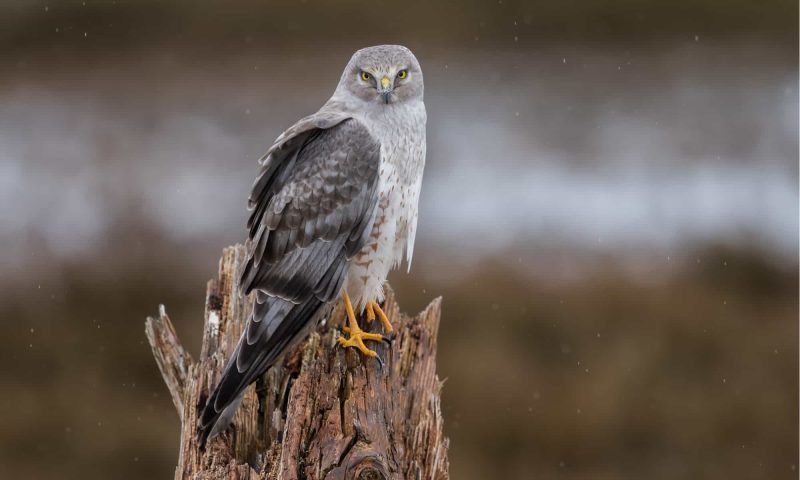
The Northern Harrier, often nicknamed the “marsh hawk,” is a slender, long-winged raptor known for its low, buoyant flight over open landscapes. It has an owl-like facial disk, which is unique among hawks and helps it locate prey by sound. Males are pale gray above with whitish undersides and black wingtips, while females and juveniles are brown overall with streaked underparts. One of the most distinctive features for identifying Northern Harriers in flight is the prominent white rump patch just above the tail, which is visible from a distance.
This species displays hunting behavior that sets it apart from most other hawks. Rather than soaring high, the Northern Harrier glides low to the ground with wings held in a shallow V-shape, skimming over fields, marshes, or grasslands in search of small mammals and birds. It relies heavily on both sight and sound to detect prey, making its specialized facial disk a vital adaptation. Harriers often pause in midair to hover briefly before pouncing on their target, a technique that adds to their distinctive hunting style.
Northern Harriers are closely associated with open habitats such as wetlands, grassy meadows, sagebrush flats, and agricultural fields. In Nevada, they are most often found in the Carson Valley, the Lahontan Valley wetlands, and other broad, open expanses across northern and central parts of the state. These areas provide the low vegetation and wide visibility that harriers need to hunt effectively. They often nest on the ground in dense grasses or low shrubs, building well-hidden nests that are difficult to spot.
In terms of size, Northern Harriers are medium-sized hawks, measuring around 18 to 20 inches in length with a wingspan of 40 to 46 inches. Despite their relatively light body (averaging between 12 to 18 ounces), they are strong and graceful flyers. In Nevada, they are commonly seen in winter, although some individuals may be present year-round depending on local conditions. Their graceful flight and striking appearance make them a favorite among birdwatchers, especially during early mornings and late afternoons when they are most active.
Rough-legged Hawk (Buteo lagopus)
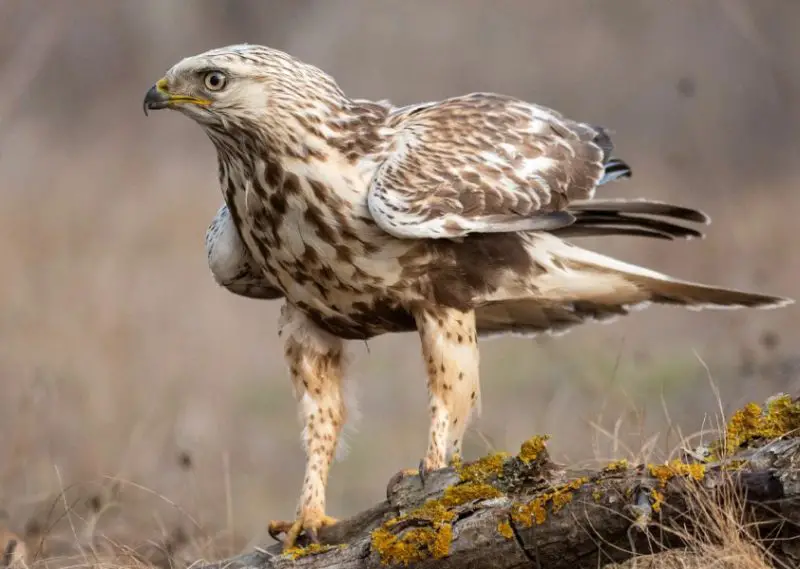
The Rough-legged Hawk is a winter visitor to Nevada, distinguished by its feathered legs, which help it withstand cold climates. Adults come in light and dark morphs; the light morphs have pale underparts with a dark belly patch and wrist marks, while the dark morphs are uniformly chocolate-brown with slightly lighter flight feathers. Their wingspan reaches 52 to 54 inches, and they weigh between 2 and 3 pounds.
This species breeds in the Arctic tundra and migrates southward in winter. It is specially adapted for cold-weather environments, with dense plumage and behaviors suited for snowy habitats. The feathered legs are a unique feature among North American hawks, giving the species its name. They often hover in place while hunting, a technique called “kiting,” used to spot prey in open landscapes.
Rough-legged Hawks feed primarily on small mammals like voles and lemmings, though they may also take birds and carrion when available. They prefer open country for foraging, including prairies, agricultural fields, sagebrush flats, and desert basins. Their flight is buoyant and often includes long glides punctuated by brief flapping.
In Nevada, these hawks are most frequently observed in the northern part of the state from late fall through early spring. Places like the Lahontan Valley, Ruby Valley, and Great Basin open lands serve as prime wintering grounds. Their presence is highly seasonal, and birders often look forward to their arrival as a signal of changing seasons.
Ferruginous Hawk (Buteo regalis)
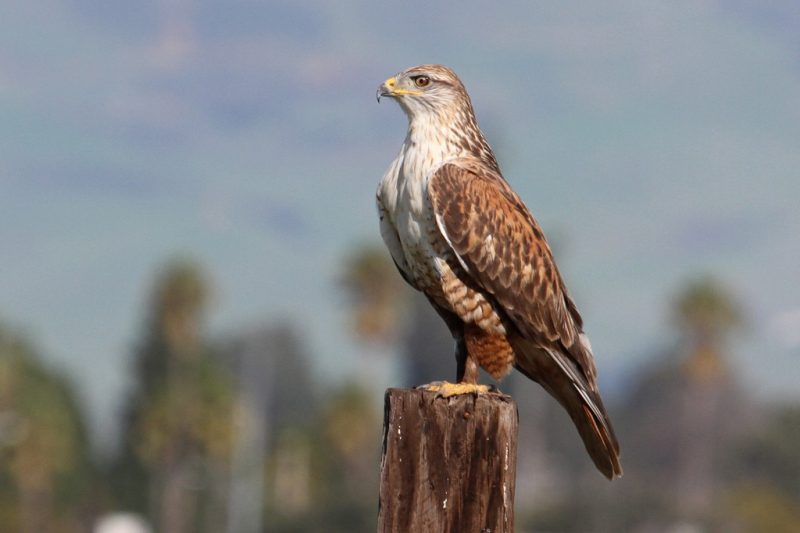
The Ferruginous Hawk is the largest North American buteo, showcasing broad wings, a large head, and a massive yellow gape that extends past the eye. Adults display pale underparts with rust-colored back, legs, and wing feathers. Some individuals appear entirely light (light morph), while others may have dark plumage (dark morphs) but always retain the same large, bulky frame. Wingspans range from 53 to 56 inches, and they weigh between 2.5 to 4.5 pounds.
This hawk is a ground-nesting specialist of the arid West, favoring wide-open spaces like deserts, grasslands, and shrublands. It often hunts by soaring low over the ground or perching on rocks and fence posts. Ferruginous Hawks feed primarily on ground squirrels, prairie dogs, and rabbits, though they may also consume snakes and birds. They are known for their impressive flight displays, especially during courtship.
In Nevada, Ferruginous Hawks are typically found in the northern and central parts of the state during the non-breeding season. They are winter visitors in many regions, though some may remain year-round in areas with consistent prey availability. They avoid forested or densely vegetated habitats and are almost exclusively found in treeless, expansive terrain.
Due to their dependence on specific prey and habitat conditions, Ferruginous Hawks are sensitive to land-use changes. They are often monitored by wildlife agencies, and sightings in places like the Lahontan Valley and northern deserts are especially valued by birdwatchers. Their regal posture and large size make them a memorable sight on the Nevada landscape.
Zone-tailed Hawk (Buteo albonotatus)
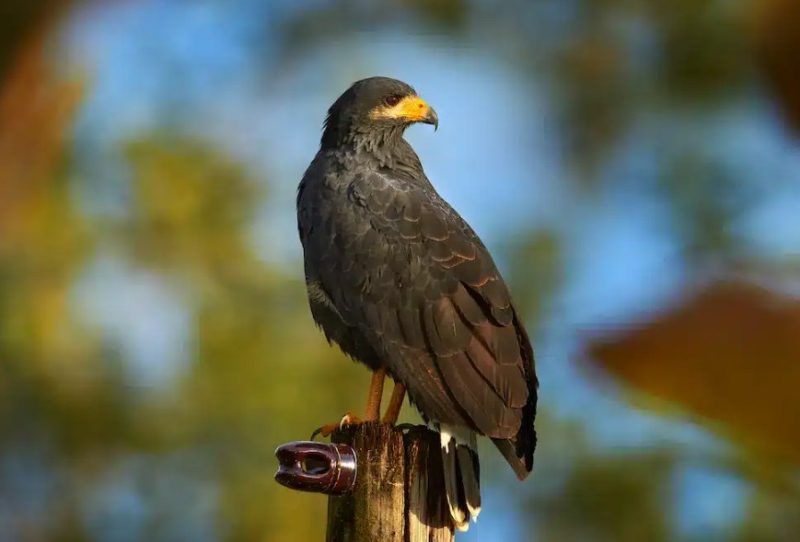
The Zone-tailed Hawk is a medium-sized raptor that mimics the appearance of the Turkey Vulture to approach prey unnoticed. Adults are mostly black with white bands on the tail and faint barring on the flight feathers. When flying, they hold their wings in a slight V-shape, much like vultures, which allows them to blend into vulture flocks. They have a wingspan of about 46 to 55 inches and weigh between 1.3 to 2 pounds.
This hawk’s mimicry of vultures is a rare form of deception in birds of prey. Prey animals often ignore vultures, allowing the Zone-tailed Hawk to get closer before making a sudden, lethal dive. They primarily feed on small birds, lizards, and mammals, hunting from both the air and concealed perches. Their flight is graceful and buoyant, resembling vultures almost exactly from below.
Zone-tailed Hawks prefer rugged terrain and canyonlands, especially in arid or semi-arid regions. They nest on cliff ledges or in tall trees and are often seen soaring near rock formations. In Nevada, they are considered rare but are occasionally sighted in the southern parts of the state, including areas near Lake Mead and the Spring Mountains.
While not commonly found, their presence in Nevada has been documented enough to include them in the state birding checklist. Observers in southern Nevada may glimpse this stealthy hunter gliding silently above desert canyons, a rare but thrilling find for any bird enthusiast.
Common Black Hawk (Buteogallus anthracinus)
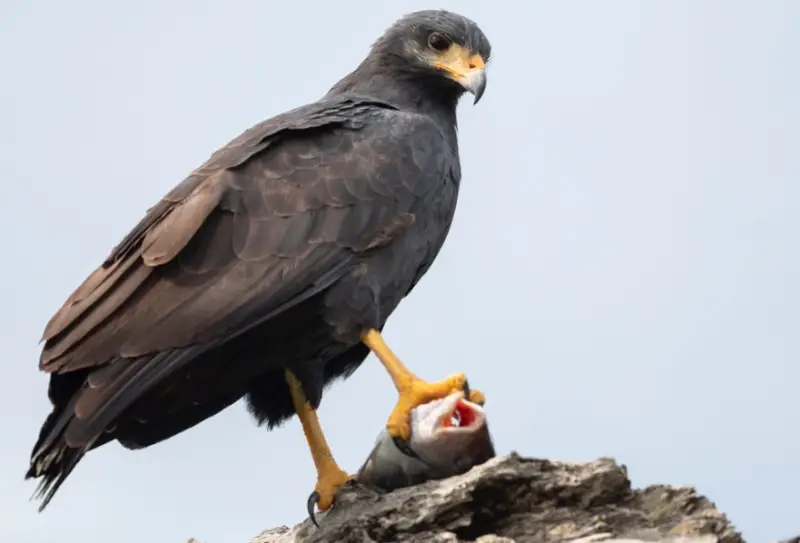
The Common Black Hawk is a large, dark raptor with broad wings and a short, wide tail marked by a single broad white band. Adults are nearly all black with yellow legs and a yellow beak, while juveniles are brown with mottled white and dark streaks. Their wingspan is approximately 50 to 53 inches, and they typically weigh around 1.8 to 2.6 pounds.
These hawks are specialized for life along waterways and are often associated with riparian habitats. Their diet consists of aquatic and semi-aquatic animals such as fish, frogs, snakes, and crustaceans. They are often seen perched low in trees near streams or soaring slowly above riverbanks. Their flight is steady and deliberate, often with shallow wingbeats and occasional gliding.
In Nevada, the Common Black Hawk is rare and generally restricted to riparian corridors in the southern parts of the state. Occasional sightings have occurred along the Virgin River, the Muddy River, and other waterways where suitable habitat still exists. They are summer breeders in the southwestern U.S. but only occur sporadically in Nevada.
Due to their habitat specificity and limited range, these hawks are considered a species of interest by conservationists. Encounters with them are uncommon, but they remain a possibility for persistent birders searching riverine forests in southern Nevada, especially during the warmer months.
Highlights by Region & Season
Carson Valley / Northern Nevada
Carson Valley and the greater Northern Nevada region offer some of the richest raptor viewing opportunities in the state. The open agricultural fields, high-desert sagebrush, and scattered wetlands create an ideal hunting ground for a wide range of hawks and falcons throughout the year. During the colder months, the valley becomes a wintering haven for Ferruginous Hawks and Rough-legged Hawks, both of which are drawn to the expansive terrain rich in small mammal prey. These large buteos are most frequently seen perched on fence posts or soaring low over open rangelands.
Year-round residents include the familiar Red-tailed Hawk, one of the most abundant raptors in the region. These birds often nest on utility poles, cliffs, or large trees and can be seen hunting rodents in open fields. Northern Harriers are also present year-round and are easily recognized by their low, buoyant flight over marshy or grassy areas. Males, known as “gray ghosts,” contrast sharply with the darker, brown females. The Cooper’s Hawk and Sharp-shinned Hawk, both woodland accipiters, can be found hunting smaller birds along riparian corridors and forested edges, especially near residential areas.
In spring and summer, Swainson’s Hawks return to Carson Valley to breed. These long-distance migrants favor the open agricultural areas for nesting and foraging, often choosing lone trees or utility poles as nest sites. Ospreys also appear in summer, particularly near bodies of water like Topaz Lake or the Carson River, where they fish to feed their young. Other notable species include the agile American Kestrel, the swift Peregrine Falcon, and the dry-country specialist Prairie Falcon, all of which can be seen hunting or perched in wide-open areas across the region.
This part of Nevada is especially attractive to birders in late fall and winter, when northern migrants swell local raptor populations. Observers scanning the skies from roadside pullouts or established trails like those in the Carson Valley Trail System are often rewarded with views of multiple hawk species in a single day. The combination of open space, diverse habitats, and seasonally shifting populations makes Northern Nevada a premier destination for hawk watching.
Red Rock Canyon Area
The Red Rock Canyon National Conservation Area, just west of Las Vegas, is a reliable location for spotting hawks in southern Nevada. This dramatic desert landscape, with its towering red cliffs, open washes, and scattered Joshua trees, supports a diverse array of raptors year-round. Among the most commonly seen are the Red-tailed Hawk and Cooper’s Hawk, both of which thrive in this mixed terrain. Red-tailed Hawks use the cliff faces and high outcroppings as prime nesting and hunting perches, while Cooper’s Hawks prefer the wooded washes and suburban edges of the conservation area.
At least seven species of hawks have been recorded in the area, including seasonal visitors and less common residents. During winter, birders may spot a Ferruginous Hawk or Northern Harrier gliding across the valley floor, while spring and fall migration occasionally bring transient species such as the Sharp-shinned Hawk or even the Swainson’s Hawk. The Prairie Falcon, adapted to arid environments, is another exciting find here, often seen zipping across the canyons or hunting over open desert flats.
The unique geology of Red Rock Canyon also provides perfect lookout points for observing raptors in flight. Trails like Calico Tanks, Turtlehead Peak, and the Scenic Drive overlook areas offer elevated viewpoints that make it easier to catch sight of soaring hawks or falcons. Visitors during the cooler months may even be lucky enough to witness multiple species in a single outing, especially early in the morning when thermals begin to rise.
Because of its proximity to Las Vegas and its dramatic scenery, Red Rock Canyon remains a favorite location for both casual birders and seasoned raptor enthusiasts. With minimal tree cover and broad vistas, it’s one of the best areas in southern Nevada to study hawks in flight or observe their hunting behavior in real time.
Tips for Hawk Watching in Nevada
Nevada offers exceptional opportunities for hawk enthusiasts, and knowing where and when to look can greatly enhance your chances of observing these raptors in action. One of the best recommendations is to visit the Carson Valley HawkWatch during migration seasons, particularly in the fall. This official hawk monitoring site near Genoa tracks raptor migration across the eastern Sierra front. Between September and early November, birders can witness impressive flyovers of hawks, eagles, and falcons riding thermals along the mountain ridges. Clear skies and strong updrafts funnel large numbers of migrating birds through this area, making it one of the premier hawk-watching events in the state.
For those interested in spotting Red-tailed and Ferruginous Hawks, open desert basins, agricultural lands, and grasslands are the ideal places to explore. These broad-winged buteos prefer wide-open spaces where they can soar while scanning for rodents. In the winter months, Ferruginous Hawks become more prominent across northern and central Nevada, using fence posts, powerlines, and rocky outcroppings as vantage points. Drive slowly along rural roads or hike in areas like Mason Valley Wildlife Management Area or the Pahranagat Valley to maximize your chances.
In urban areas or forested suburbs, early morning and late afternoon are prime times to see Cooper’s Hawks and Sharp-shinned Hawks. These two accipiters are ambush predators that rely on stealth and cover, often darting through backyards or riparian greenbelts in pursuit of smaller birds. Look for quick, agile flight patterns or sudden bursts of movement near feeders or hedgerows. Neighborhood parks, golf courses, and areas with tall shade trees near Las Vegas, Reno, or Carson City are hotspots for these elusive species.
To catch a glimpse of more specialized or elusive hawks, focus your attention on wooded riparian zones—areas along streams, creeks, or rivers. Here, you may find Red-shouldered Hawks, which favor dense vegetation near water, or even the rare Common Black Hawk, a southwestern species that occasionally turns up along slow-moving rivers or desert oases. Scan tree canopies, especially near water, and listen for their distinctive calls. Patience and quiet observation near such habitats can yield remarkable and unexpected sightings.


